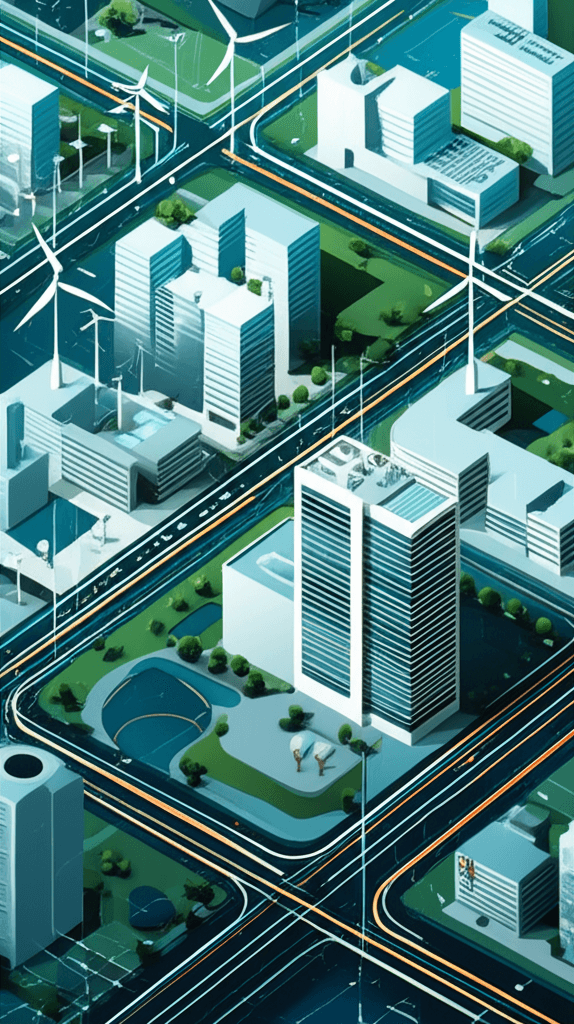AI Reshapes Cities: Sweco Leads Urban Revolution for Sustainable Futures
From managing traffic to boosting biodiversity, Sweco's AI innovations forge the sustainable, efficient, livable cities of tomorrow.
July 31, 2025

Artificial intelligence is poised to redefine the very fabric of our urban environments, moving from a conceptual buzzword to a practical tool in the hands of architects, engineers, and city planners. At the forefront of this transformation is Shah Muhammad, who leads AI Innovation at the European design and engineering consultancy Sweco. The firm, which handles over 150,000 projects annually with more than 22,000 consultants, is integrating AI to tackle some of the most pressing urban challenges, from traffic congestion and energy inefficiency to sustainability and public well-being.[1] This technological shift is not merely about automation but about augmenting human expertise to create cities that are more sustainable, efficient, and livable. By leveraging AI, firms like Sweco are moving beyond the traditional constraints of design and engineering, offering a glimpse into a future where data-driven insights and generative design build smarter, more resilient urban landscapes.
Sweco's strategy involves empowering its employees with AI tools to enhance productivity and foster innovative solutions.[1] A prime example of this is SwecoGPT, an internal generative AI assistant developed using Microsoft's Azure AI Studio.[1] This tool was created to automate document creation, enhance enterprise-wide search capabilities, and analyze vast amounts of data, freeing up consultants to focus on more creative and complex problem-solving.[1] The rapid development of such tools underscores a commitment to digital transformation within the company. This move towards AI-powered assistance allows designers to present clients with multiple, optimized design alternatives in a fraction of the time it would take manually.[2] The technology can optimize designs for various parameters, such as cost or material usage, a task that is often not feasible in traditional design processes due to time and budget constraints.[2] This represents a significant shift in an industry that has been historically slow to adopt new technologies, tackling a long-standing productivity plateau in the construction sector.[2]
The applications of AI in Sweco's projects are diverse and directly impact the creation of sustainable cities. Artificial intelligence can support the development of low-carbon energy systems, facilitate the integration of renewable energy, and improve energy efficiency.[3] For instance, AI can enable smart grids that better match electricity demand with the availability of solar and wind power.[3] In urban planning, AI analyzes historical land use data to identify patterns and predict areas prone to natural disasters like flooding, allowing for more resilient infrastructure development.[4] Sweco is also using AI to address biodiversity, with platforms like CAPTURE, which uses machine learning to identify animal species from images, providing crucial data for designing infrastructure that benefits both humans and wildlife.[5] Another innovative tool, the Carbon Cost Compass, gives designers immediate feedback on the climate footprint and cost of their design choices, promoting sustainable decision-making from the earliest stages of a project.[5] This focus on data-driven sustainability extends to creating digital twins—virtual 3D models of properties linked to real-world operational and climate data—which help building owners minimize environmental impact and reduce administrative costs.[5]
Beyond sustainability, AI is being deployed to improve the day-to-day experience of city dwellers. Intelligent traffic management systems use AI algorithms to analyze real-time data from sensors and cameras to optimize traffic flow, reduce congestion, and cut emissions.[6] In Singapore, such systems have led to a 92% reduction in crowded bus services and significantly shorter wait times.[6] Similarly, Los Angeles has implemented predictive traffic management to anticipate bottlenecks, improving travel times by as much as 12%.[6] Sweco is also harnessing urban data with systems like CROMAS, which can display and predict crowd densities to help manage public spaces and prevent overcrowding.[5] This ability to process and analyze immense datasets from city infrastructure is fundamental to the smart city concept, where informed decisions can be made to enhance nearly every aspect of urban life, from waste management using smart bins to improving public safety through advanced video surveillance analysis.[4] While these advancements offer tremendous potential, they also bring ethical considerations regarding public surveillance, data privacy, and algorithmic bias, which require careful management.[3]
In conclusion, the work being done by innovators like Shah Muhammad and firms such as Sweco illustrates that AI is no longer a futuristic concept but a present-day catalyst for transforming our cities. By embedding AI into the core processes of design, engineering, and urban planning, the industry is unlocking new levels of efficiency, sustainability, and human-centric design. From generative tools that optimize building structures to intelligent systems that manage city-wide mobility and resources, artificial intelligence is providing the means to address complex urban problems with unprecedented sophistication.[2][6] While challenges around data ethics and implementation remain, the trajectory is clear: the fusion of human ingenuity and machine intelligence is building the foundation for the resilient, adaptable, and sustainable cities of tomorrow. The continued development and thoughtful application of these technologies will be crucial in shaping urban environments that can thrive for generations to come.[3][7]